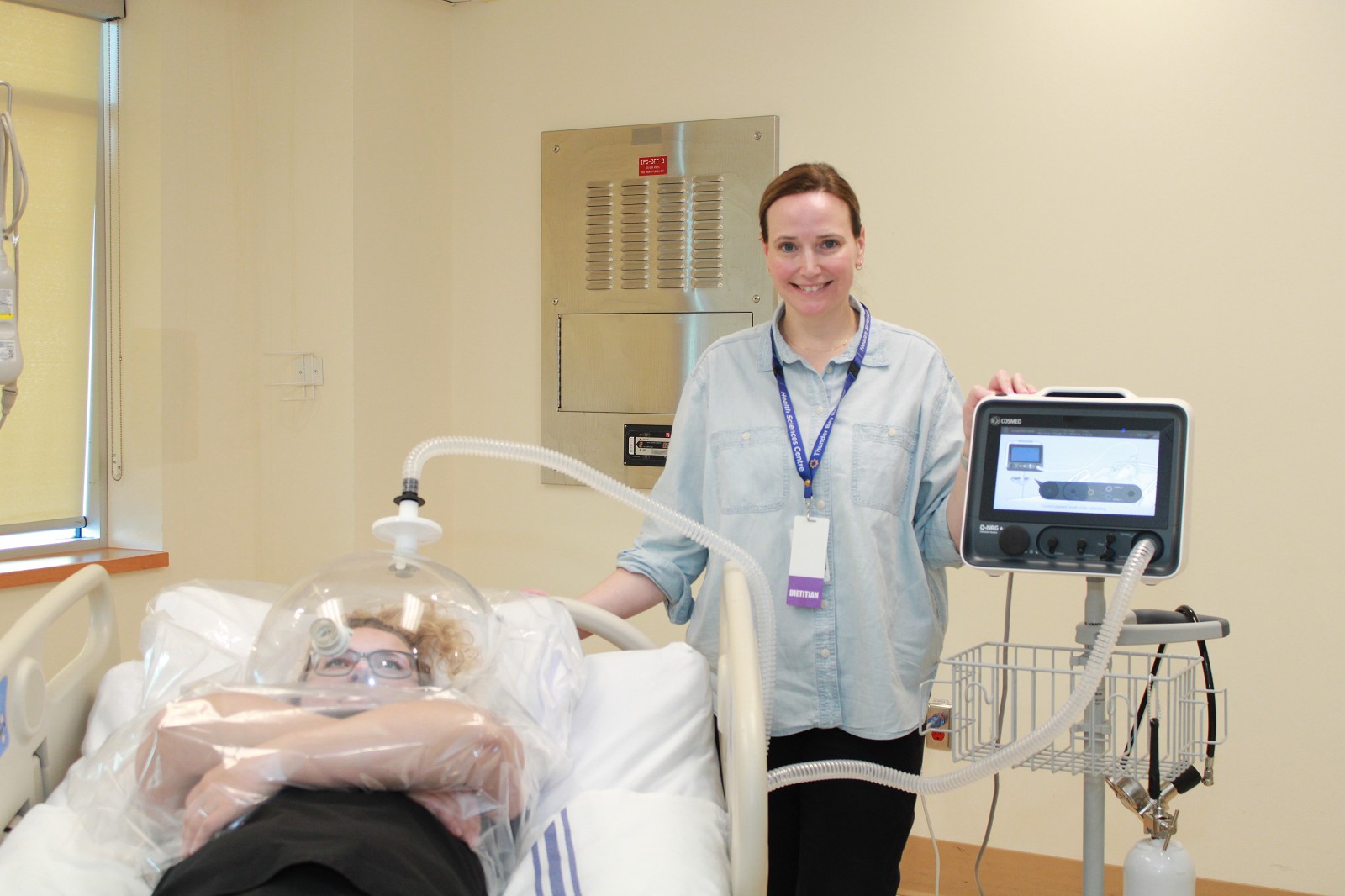Your Impact: Accurate Calorie Counter Improves Care for ICU Patients
Published Monday, November 10, 2025

Thanks to donor support, Lindsay Sutherland, Registered Dietitian at the Thunder Bay Regional Health Sciences Centre, uses the new Q-NRG+ Metabolic Monitor in the ICU to provide more personalized nutrition care for patients.
Ensuring that patients in the ICU receive the right number of calories is critical to patient care. However, calculating the number of calories required can be challenging. There are many variables that can affect calorie burn including age, gender, weight, and current treatments – and most variables have wide ranges of “normal.”
Thanks to your donations to the Thunder Bay Regional Health Sciences Foundation, your participation in Foundation events, and your purchase of Thunder Bay 50/50 tickets, dietitians in the ICU have a brand new tool called the Q-NRG+ Metabolic Monitor. This system accurately measures how many calories each individual patient burns in a given time period. With this information, dietitians can create a more personalized nutrition plan, improving patient care.
For example, many patients in the ICU require a ventilator to help them breathe. Providing the optimal number of calories based on each patient's individual needs has a direct impact on how long they need breathing assistance.
“Either too many or too few calories can mean that the patient stays on that ventilator longer,” said Lindsay Sutherland, Clinical Dietitian in the Thunder Bay Regional Health Sciences Centre's ICU. “All other things being equal, giving the patient exactly the (food) energy they need can reduce the amount of time on the mechanical ventilator.”
Imagine lighting a candle. Some candles burn quickly and some burn slowly. Now imagine you need to ensure your candle always has exactly enough wax to burn. But here's the thing: you know how fast the average candle burns, but no real way of knowing how fast that particular candle is actually burning.
Dietitians faced a similar challenge in the ICU every day.
Thanks to your support of the Foundation, the metabolic monitor you helped purchase gives dietitians accurate measurements so they can adjust calorie intake accordingly.
To the untrained eye, the metabolic monitor might look similar to a regular vital signs monitor. Instead of heartbeat readings, it gives the dietitian information about the calories the patient is burning. To get a reading, a respiratory therapist hooks up the metabolic monitor directly to the ventilator for about 15 minutes and accurately determines how many calories are being burned based on oxygen and carbon dioxide measurements.
“It's very easy to use,” Sutherland said. “The older models would take up to a half-hour just to calibrate, and then the test itself would take an hour. The new metabolic monitor takes 15 minutes to get an accurate reading and only needs calibrating once per month.”
Shorter testing time also helps improve care because the patient needs to be stable during the test. That's not always easy in the ICU when medications, ventilation settings, and the need to move the patient happen all the time.
Sutherland said that she's already seeing great results thanks to the more accurate measurements she gets from the metabolic monitor.
“This monitor has been invaluable for ensuring patients are getting the nutrition they need when they're critically ill,” she said.
This is one example of the kinds of impact you make on patient care every day at the Hospital. Your donations are making a difference! Learn more about the great equipment and programs you help fund:
healthsciencesfoundation.ca/news